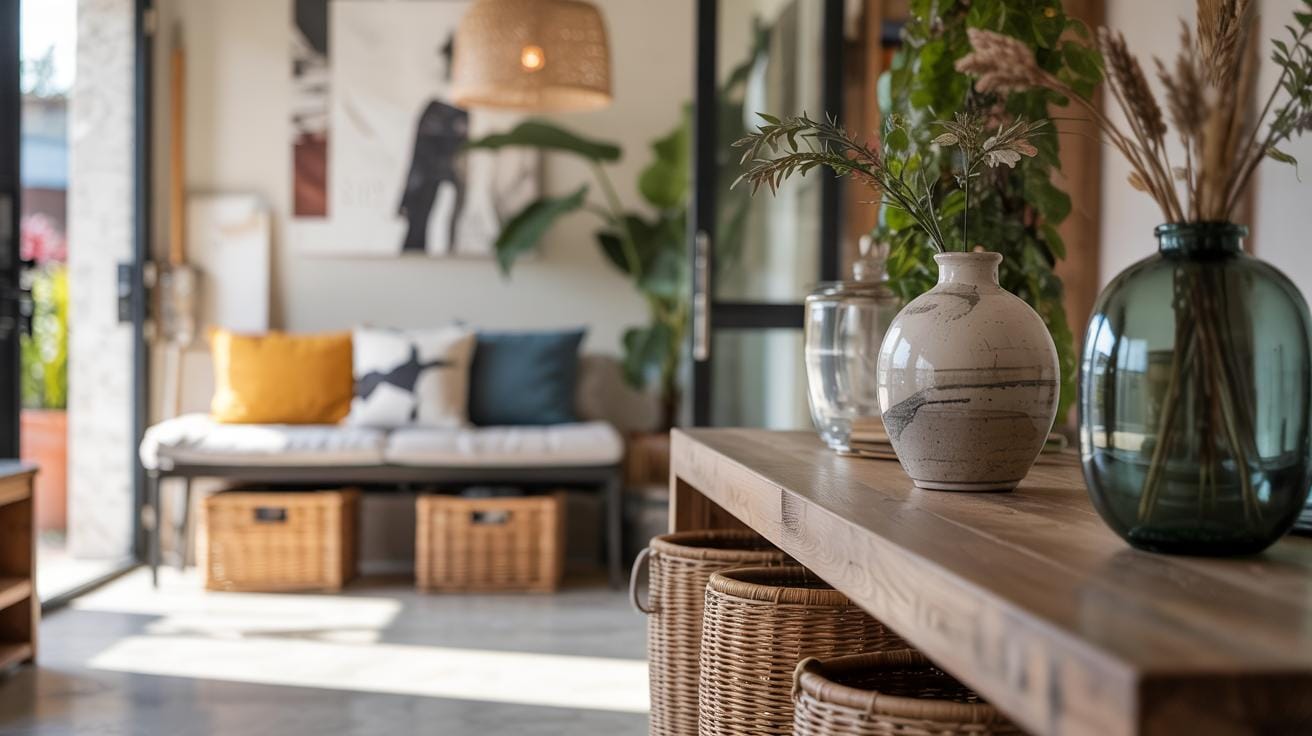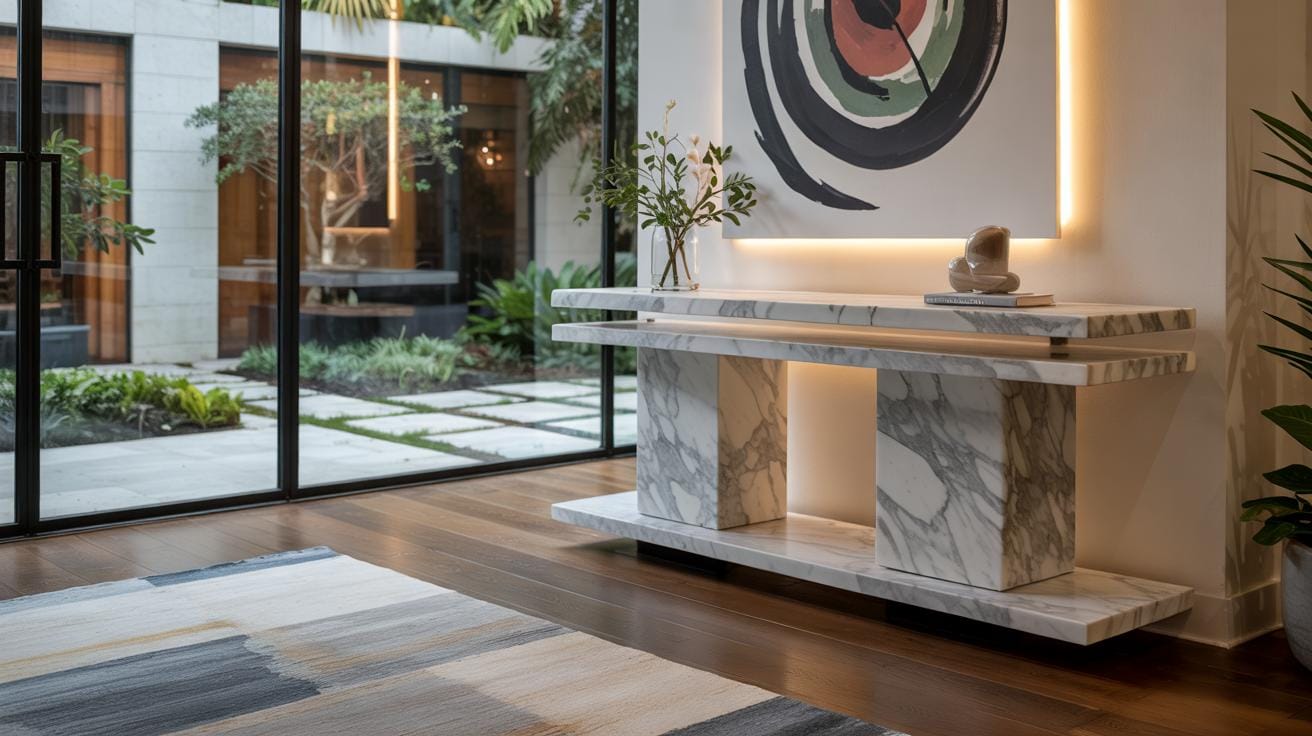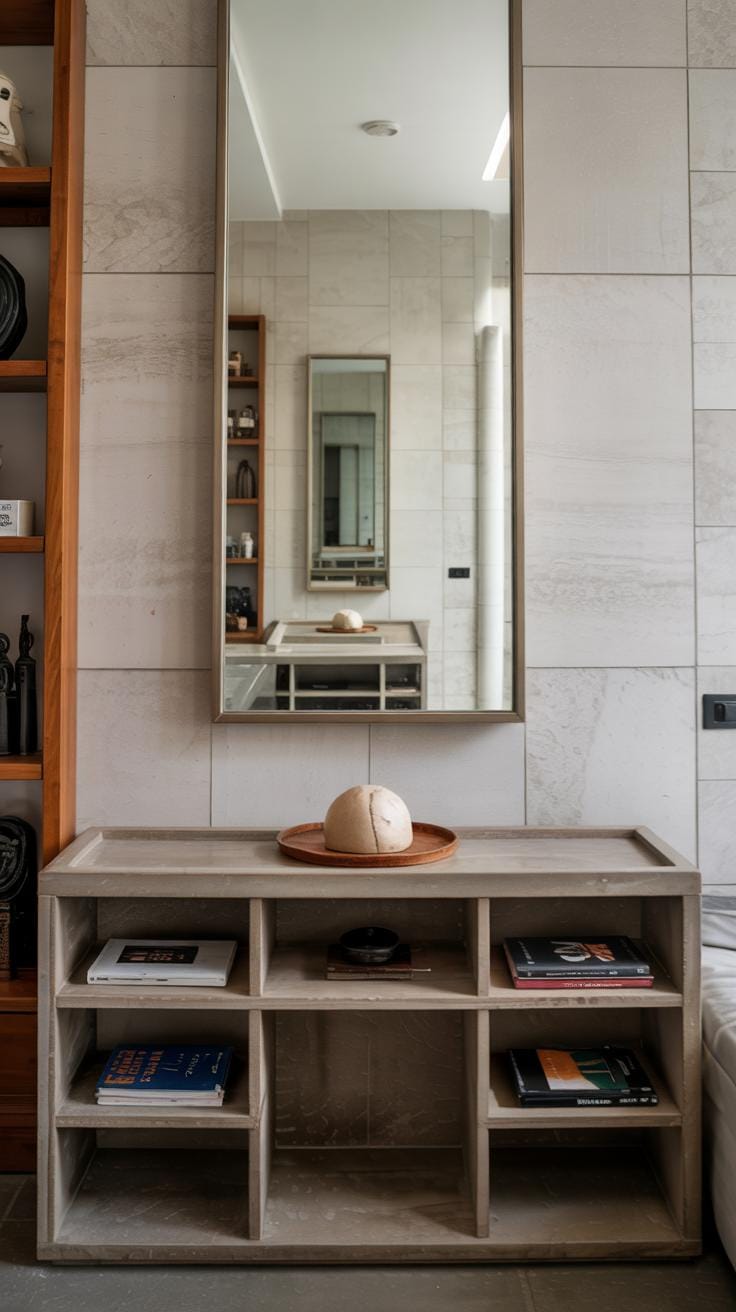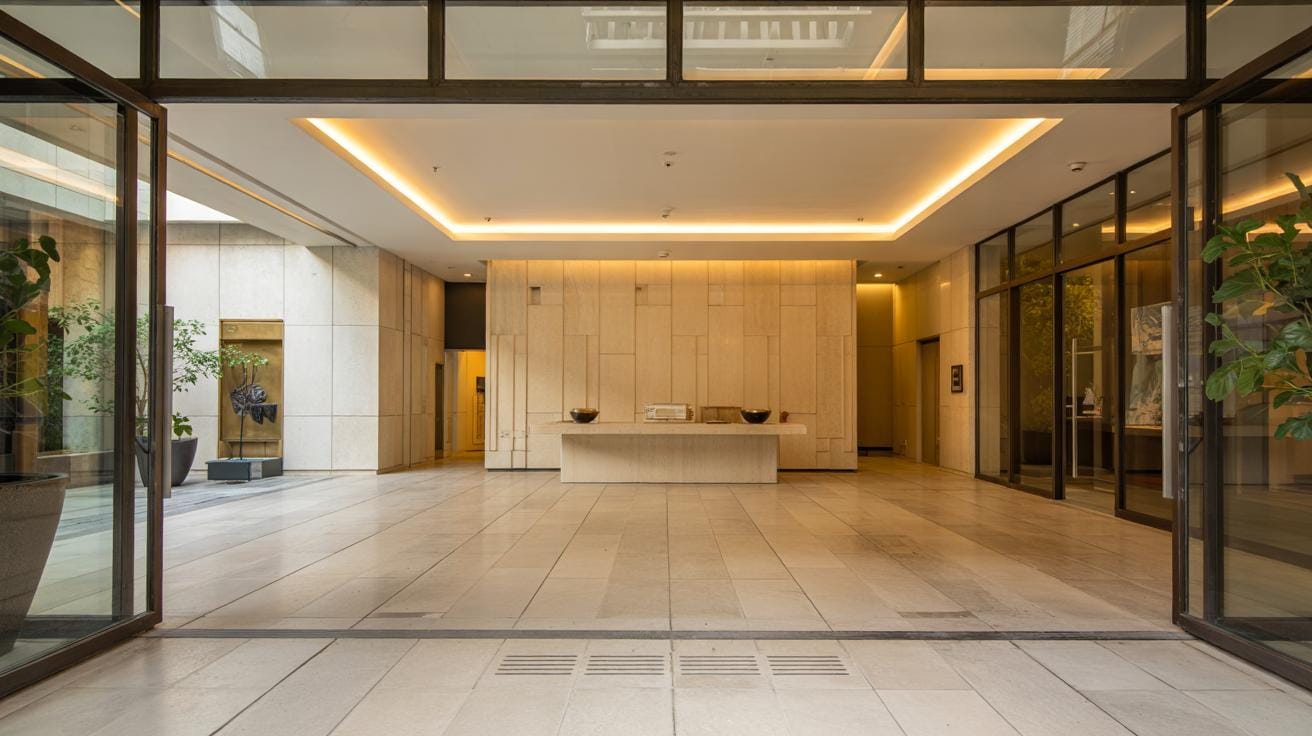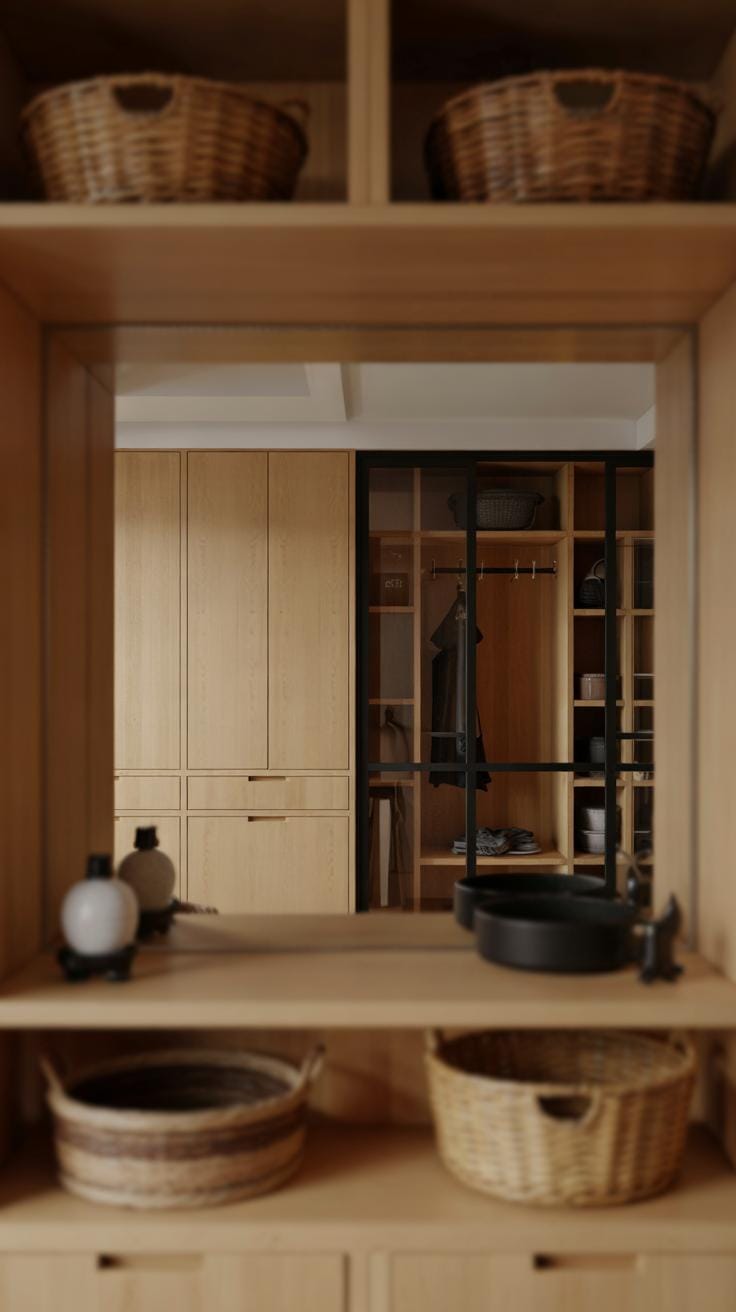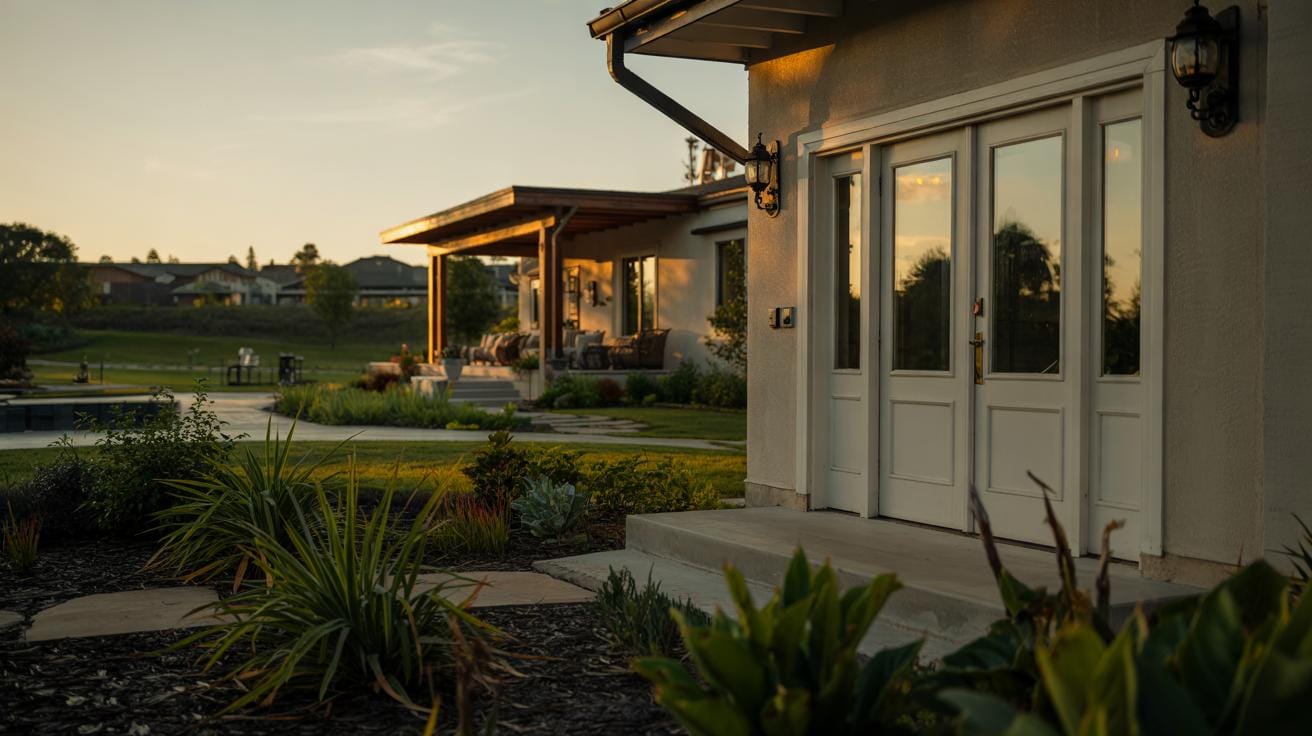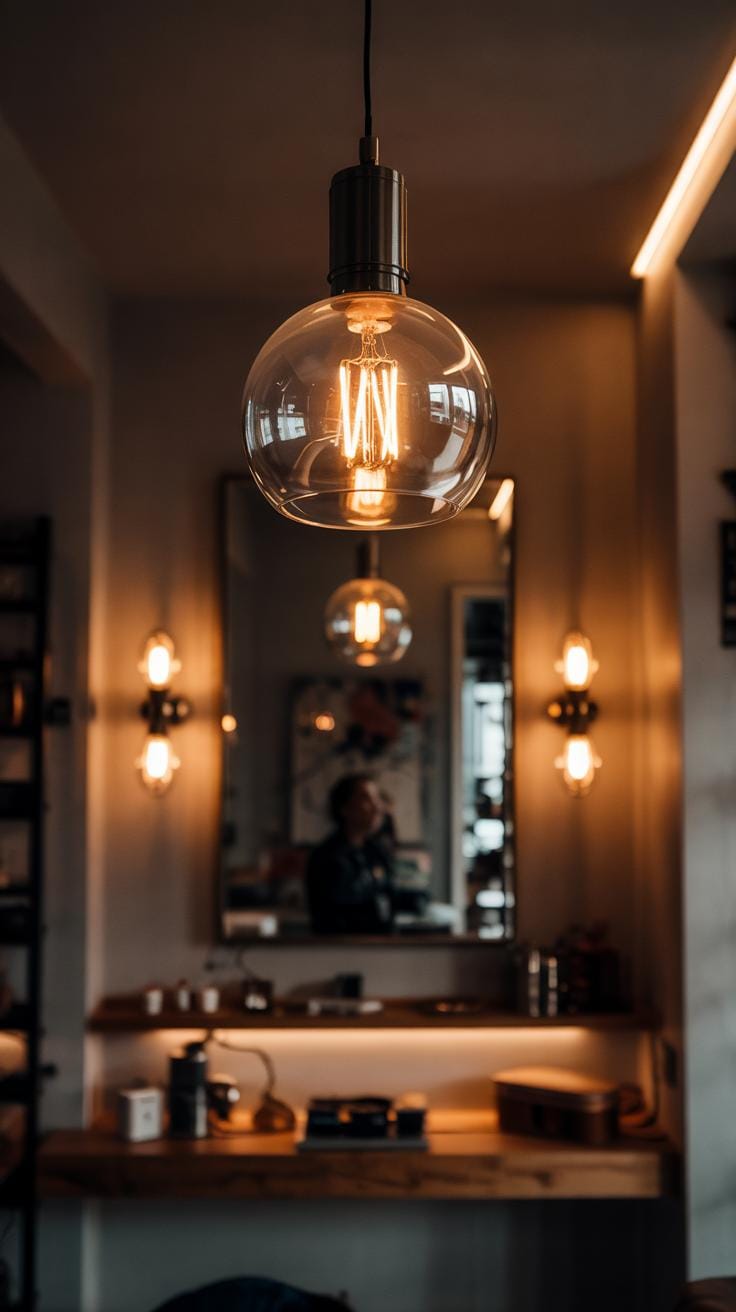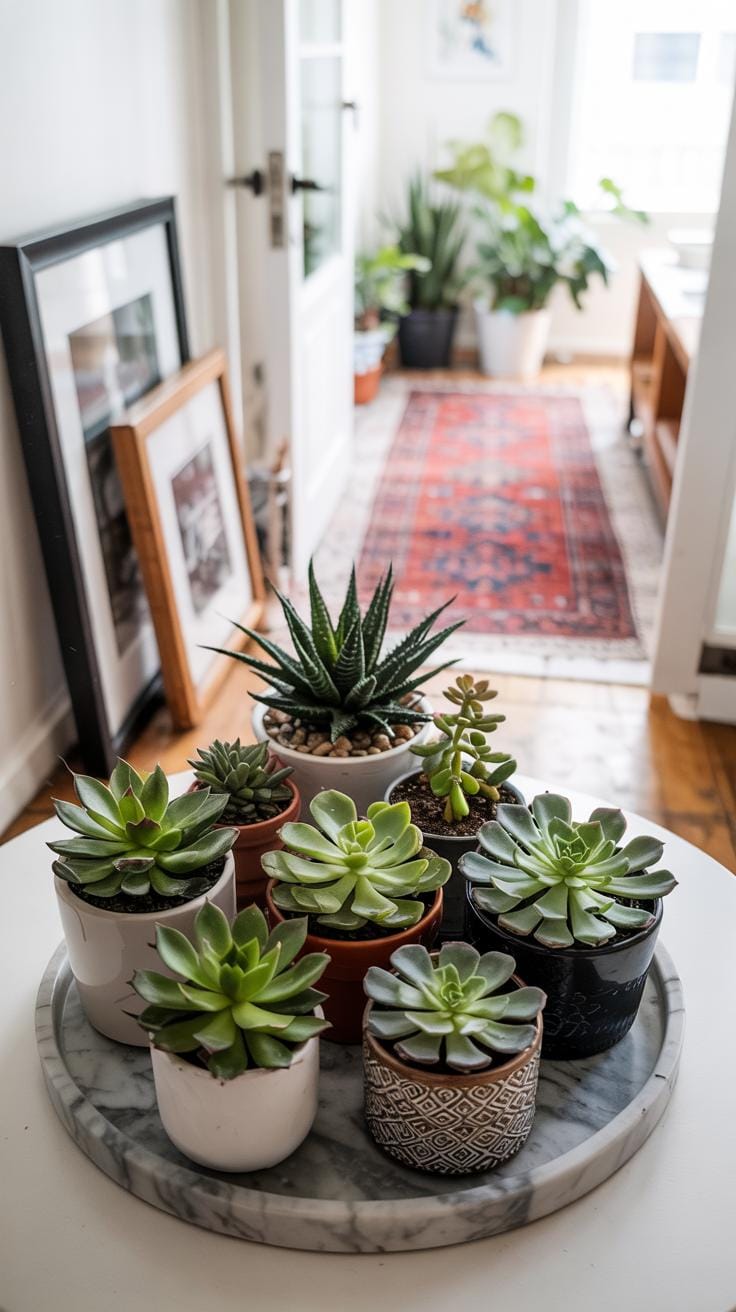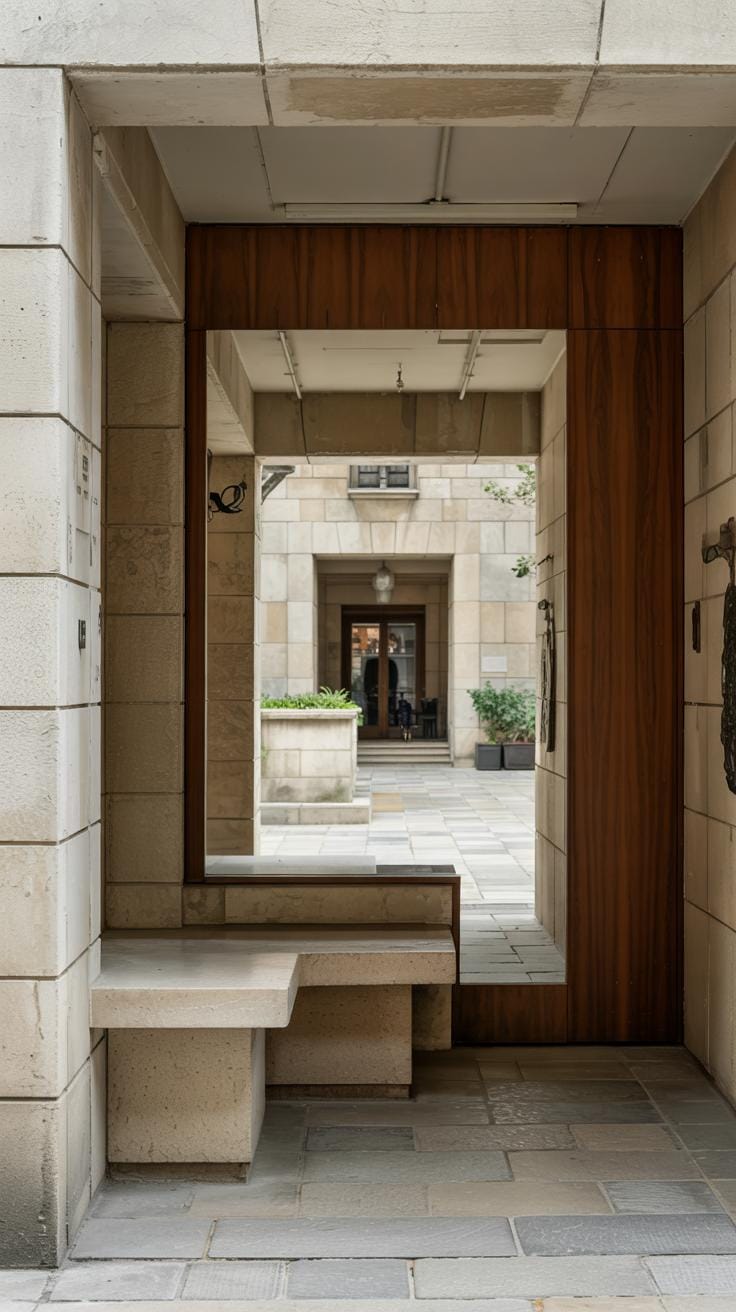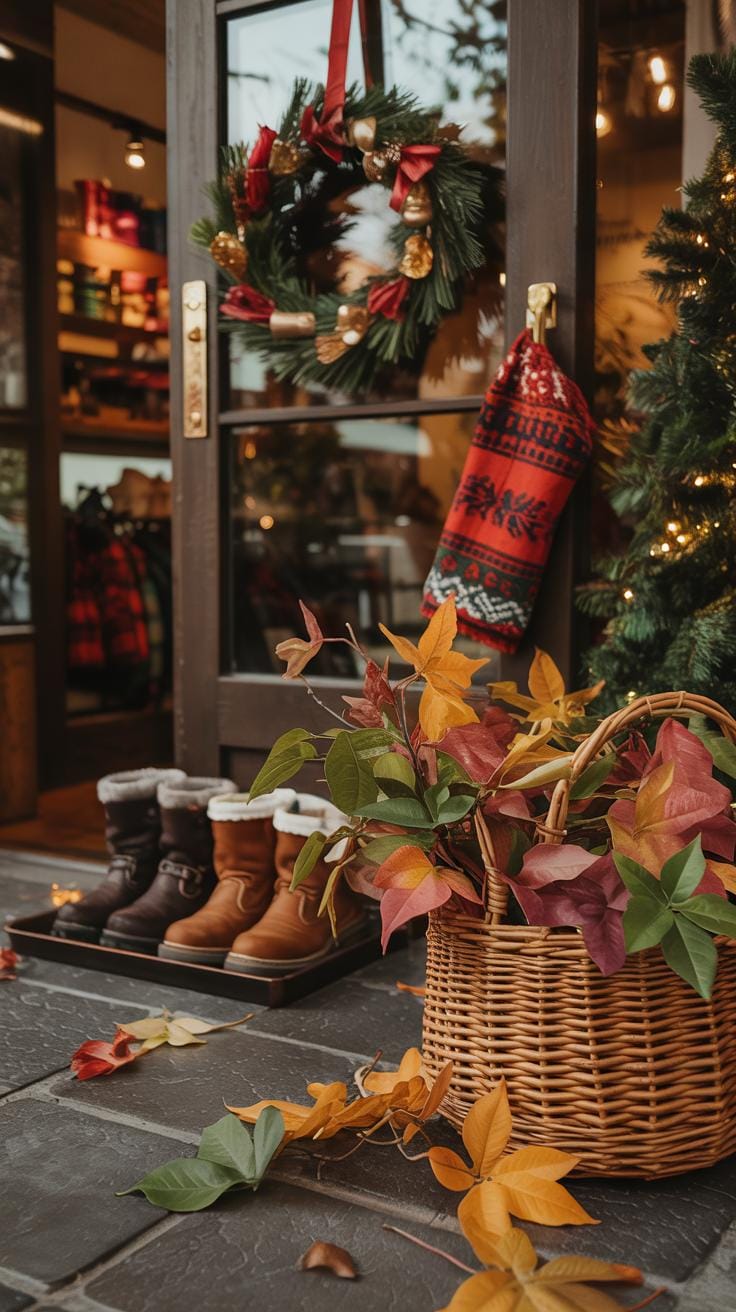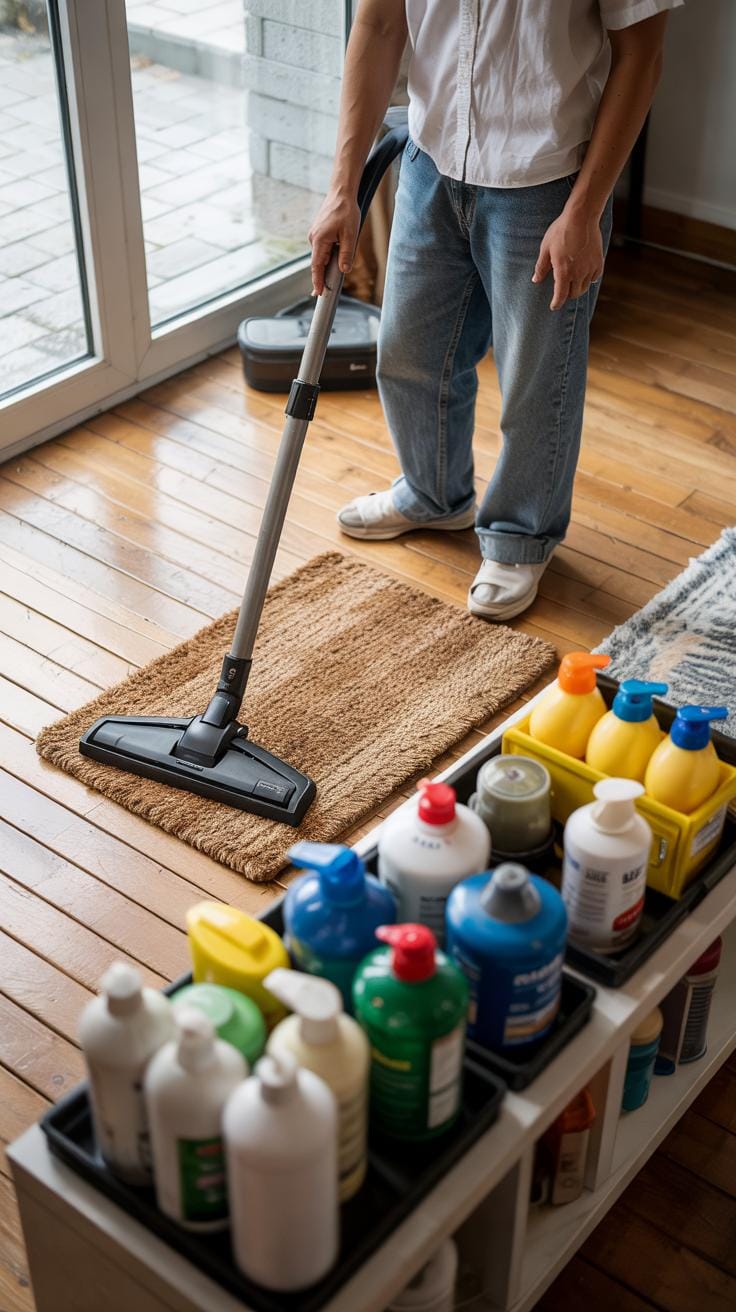Introduction
Your entryway is the first part of your home that you and your guests experience. This space serves as a bridge between the outdoors and your living area. It’s important to design it in a way that combines style and function to create a welcoming atmosphere. How can you transform this often overlooked area into a practical and stylish space that fits your lifestyle?
Designing an entryway involves more than just aesthetics. It requires thoughtful planning to accommodate daily activities like storing coats, shoes, and keys while maintaining an attractive look. What elements can you add to your entryway to improve its functionality and enhance the overall appeal of your home? This article will provide detailed ideas to help you achieve a balanced and efficient entry space.
Entry Way Ideas For A Functional And Stylish Transitional Space
Understanding The Role Of Your Entryway
Your entryway serves as the first touchpoint between the outside world and your home. This space helps you shift from the outdoors—where you encounter weather, dirt, and noise—to the calm and comfort of your living area. It should manage practical needs, like removing shoes or storing coats, while welcoming guests warmly.
How you arrange this area can set the tone for your whole home. A cluttered or poorly planned entry can cause frustration each day, slowing down your routine. A tidy, thoughtful design invites ease and calm, helping you start and end your day smoothly.
Consider what role your entryway plays in your daily life. Is it a quick drop zone, or a spot to pause and organize before moving deeper into your home? Knowing this guides how you plan its layout and features.
What Makes An Entryway Essential
Your entryway greets guests, making their first impression of your home. It should feel inviting and organized, showing your style without overwhelming. Storage is critical here. This might include places for shoes, coats, bags, and keys to avoid clutter spilling into other rooms.
Think about managing outside elements. Wet umbrellas, muddy boots, or snow-covered jackets need a home that protects your floors and keeps dirt contained. Can you include washable mats, hooks, or baskets to help with this?
By meeting these practical needs, your entry creates a smooth transition. It balances welcoming visitors while managing the real-life mess that comes with daily comings and goings.
How Entryways Influence Home Flow
The entryway functions as a crossroads connecting your front door to key living spaces like the living room, kitchen, or hallways. If the design blocks movement, it can create bottlenecks and disrupt routines. A clear, organized entryway encourages smooth traffic flow.
Open pathways and smart storage keep busy mornings running well. For example, placing a bench near your door lets you sit to put on shoes without blocking passage. Wall hooks can free floor space for easier movement.
Think about how often you, your family, or guests pass through this spot. Adjust the layout accordingly to support both daily life and special occasions. Your entry’s design influences how your home feels and functions overall.
Choosing Functional Furniture For Your Entryway
Your entryway sets the tone for the rest of your home, so the furniture you choose should balance style with real-life needs. Pick pieces that offer storage options to keep everyday items out of sight but easy to access. Benches with built-in compartments let you stash shoes or bags while also creating a spot to sit.
Wall-mounted shelves free up floor space and give you places to display decor or drop keys. Think about how the furniture works with the space you have—opt for slim profiles or pieces that fit snugly against the wall. This approach keeps the area open and inviting without sacrificing usefulness.
Ask yourself if the furniture can serve more than one purpose. That extra function does more than save space; it streamlines your routines by reducing clutter in a high-traffic zone.
Maximizing Space With Smart Furniture
Small entryways call for smart furniture that uses space wisely. Choose narrow benches or shelves that hug the wall to avoid blocking pathways. Vertical storage keeps the floor clear and takes advantage of unused wall space.
Pick furniture with hidden storage like cubbies or drawers. This keeps the surface free for essentials without crowding the area. Open shelves work well for items you reach for often, but add baskets to keep smaller things tidy.
Think about your daily habits: how many shoes, bags, or coats you handle at once. This helps you decide what kind of furniture keeps the space organized and easy to maintain.
Combining Comfort And Practicality
You want entryway seating to feel comfortable enough for putting on or taking off shoes. A bench with a cushioned seat works well and encourages you to use the space instead of rushing in and out. Choose materials that are easy to clean, like leather or treated fabric.
Seats with storage underneath combine comfort with utility. They keep clutter hidden while offering a spot for quick breaks. If space is tight, consider a fold-down seat or a small stool that tucks away when not in use.
Comfort doesn’t have to mean bulky furniture. Think about what fits your routine and home size, then pick pieces that make your entryway both welcoming and practical.
Incorporating Storage Solutions To Reduce Clutter
Your entryway often collects coats, shoes, bags, and keys, making it easy to lose track of these everyday items. Keeping this space organized requires smart storage solutions that fit your specific needs.
Hooks mounted near the door offer a simple way to hang coats and bags, making them easy to grab when you head out. Arrange hooks at different heights to accommodate children and adults alike.
Baskets work well to corral smaller items like scarves, gloves, or mail. Placing a basket on a bench or shelf keeps those essentials ready but out of the way.
Trays near the door create a dedicated spot for keys, wallets, or sunglasses. This prevents these items from scattering across counters and reduces last-minute searching.
Cubbies provide compartments for shoes and seasonal gear, helping to keep the floor tidy. If you’ve ever struggled to keep sneakers or boots organized, cubbies can be a real game changer.
Which items do you find take over your entryway? Identifying your clutter hotspots can help you choose the storage options that make the biggest impact for your space.
Using Wall Space For Efficient Storage
Floor space in entryways is often limited, making vertical storage one of your best options. Hooks installed on walls save space while keeping important items within easy reach.
Try combining hooks with narrow shelves above them. Shelves can hold keys, decorative boxes, or even small plants, adding both function and style to your entryway walls.
Wall-mounted shoe racks offer another vertical storage option that keeps footwear organized without crowding your floor. These racks free up space while improving visibility and access.
Consider pegboards for a customizable wall system. You can move hooks or baskets as your needs change, which keeps the wall adaptable for any season or lifestyle change.
Using wall space helps maintain clear pathways and reduces tripping hazards. What walls in your entryway could serve double duty and hold your essentials?
Hidden Storage To Maintain Cleanliness
Visible clutter often makes an entryway feel chaotic, even if everything has its place. Hidden storage offers a way to keep items out of sight and maintain a clean look.
Built-in cabinets use vertical space efficiently and conceal coats, bags, and shoes behind closed doors. You can choose cabinet designs that blend with your décor for a seamless appearance.
Storage benches with hinged tops double as seating and compartments for shoes or bags. This setup provides a quick cleanup solution when your entryway feels busy.
Behind mirrors or inside wall recesses are clever spots for secret storage. Small compartments here can house frequently lost items like keys or mail, but stay out of view.
How often do you find your entryway mess grows because you don’t have a place to hide essential but untidy items? Concealing clutter could be a simple fix to your entryway’s look and feel.
Lighting Design To Enhance The Entryway Ambiance
Lighting shapes how your entryway feels and works. Good lighting helps guests and family members see clearly and feel at ease the moment they step inside. Using different light types creates layers that serve both style and function.
Ambient lighting provides overall brightness. It ensures your space isn’t gloomy and prevents shadows that make entry awkward. A flush mount ceiling light or a simple chandelier can offer soft, even light.
Task lighting focuses on specific activities like finding keys or sorting mail. Adding a small table lamp or wall-mounted sconce near a console table makes these moments easier.
Accent lighting brings attention to design features or adds flair. Consider LED strip lights under shelves or spotlights on artwork. These lights add personality without overwhelming the space.
How can you mix these light layers to create an entryway that welcomes and works well for your daily routine? Aim for balance between brightness and comfort while matching your style.
Creating A Bright And Inviting Space
Choose fixtures that light the space without feeling harsh or glaring. Frosted glass shades or fabric lampshades diffuse light and reduce stark shadows. This helps the area feel warm and inviting.
Keep the fixture size proportional to your entryway. A large light in a small foyer can feel overpowering, while too small a fixture leaves the space dim. Measure your area and compare before buying.
Consider fixture style too. Simple and clean designs often suit a transitional space well, offering timeless appeal that blends with various décor choices.
Reflective surfaces like mirrors can bounce light around the room and increase brightness without extra fixtures.
Using Natural And Artificial Light Sources
Daylight boosts mood and keeps spaces lively. If your entryway has windows or a skylight, position seating or a small table nearby to take advantage of this. Natural light reduces the need for artificial bulbs during the day.
When daylight fades, layered artificial light takes over. Combine ceiling fixtures with wall sconces or table lamps to fill shadows and ensure even coverage. Using dimmers lets you adjust brightness through the day.
Think about your entryway’s orientation and available natural light. In north-facing spaces, artificial light plays a bigger role. In sunnier spots, choose bulbs that mimic daylight for consistency.
Adding Decorative Elements That Reflect Your Style
Your entryway sets the tone for your home. Choosing decorative features that show who you are makes this space truly yours. Start with artwork that clicks with your interests. Maybe a local painting or a family photo can make guests feel connected to your story.
Mirrors serve more than a practical role. They can be a focal point with stylish frames that match your taste. Choose rugs with patterns or colors you love, but that also handle foot traffic well. Think about plants as living accents for freshness and calm.
Color schemes influence mood here. Do you prefer calm neutrals, bold hues, or soft pastels? Your choices can highlight your style while keeping the entry functional. Ask yourself: Which pieces in this space feel like an extension of me?
Choosing Colors And Textures
Colors in your entryway should connect with the home’s overall look. You want a smooth flow but also a space that welcomes. Warm tones invite comfort, while cooler shades can feel crisp and neat. Consider how much light enters here; darker colors might make a small space feel smaller.
Textures add depth. Wood, metal, or fabric choices can make the entry interesting to touch and see. For example, a woven bench cushion adds softness next to a wooden console. A textured wall paint or wallpaper introduces subtle flair without overwhelming.
Think about durability too. Entryways face wear from shoes and bags. Pick textures that can handle everyday life and still look good. What materials reflect both your style and your family’s lifestyle?
Using Mirrors And Art To Enhance Space
Mirrors serve two roles. They open up confined areas and add style. Placing a mirror opposite or adjacent to the door throws light across the room and makes the space feel larger. Choose frames that suit your décor, whether sleek metal or warm wood.
Art introduces personality. A bold print or meaningful painting can spark conversation and showcase what matters to you. Smaller spaces benefit from one statement piece rather than many smaller items cluttering the wall.
Both mirrors and art invite you and your guests to pause and appreciate the space. Which items can you add that say something about your life while enhancing the entry’s size and vibe?
Designing For Different Types Of Entry Spaces
You might face various entryway layouts, each with unique challenges. A small foyer demands clever solutions to avoid crowding. Choose narrow benches or wall-mounted hooks to save floor space. Use light paint colors and mirrors to make the area feel larger and brighter. Could you add vertical storage like tall shelves? This keeps essentials handy without cluttering.
Wide hallways offer more room but can feel empty or cold. Breaking up space with a console table, seating, or an area rug makes it inviting. Add layered lighting options to create warmth and definition. Think about placing a statement chair or a small bench that invites guests to pause.
Open-concept entrances flow directly into living spaces. Use rugs or furniture groupings to visually mark the entry zone. This helps contain shoes, coats, or bags without disrupting the home’s look. Can you add a low-profile storage unit or a narrow credenza to keep essentials organized without blocking sightlines?
Optimizing Small Entryways
Small entry spaces need practical solutions that don’t crowd the room. Select slim, multi-functional furniture like a bench with shoe storage beneath. Wall hooks or pegboards hold bags and coats without taking floor space. Light paint colors reflect daylight and open the area. Consider adding a mirror to bounce light and visually expand the space.
Floating shelves keep clutter off the floor and offer spots for keys or mail. Use baskets or bins under seating to hide shoes and seasonal items. Could you replace bulky light fixtures with flush-mounted or wall sconces to free ceiling space?
Making Larger Entryways Cozy And Functional
Large entryways can feel cold or empty if left bare. Create zones by adding a comfortable seating area with a chair or small sofa. An area rug helps define this spot and adds texture. Include functional furniture like a hall tree with storage or a wide console with drawers to keep essentials organized.
Layer lighting using a chandelier, sconces, and table lamps to build a warm atmosphere. Add plants or art to bring personality to the space. Ask yourself what activities happen here—does your family need a place to organize backpacks, or a spot to check shoes before heading out?
Use larger-scale furniture to fill voids without crowding. Create a balance between open space and cozy elements to make your entryway both useful and welcoming.
Seasonal Adjustments To Keep Your Entryway Ready
Design your entryway to shift smoothly with each season. Change the function and look based on weather and daily needs. Use flexible storage solutions like hooks and baskets that can hold winter coats or summer hats without crowding the space. Consider substitutes for bulky items during warm months to free up room for things like sunscreen or light scarves.
Choosing durable flooring options helps with wet winters and sandy summers. Swap out rugs seasonally to match both style and function. Think about airflow and moisture control to prevent clutter and damage after rain or snow.
Ask yourself what items you use most in each season. Can you create zones or storage areas specifically for these? This encourages flow and keeps your entryway practical all year without any extra effort.
Storing Seasonal Gear Neatly
Arrange coats, boots, and umbrellas with easy access while avoiding mess. Use wall-mounted hooks to hang jackets and hats. A bench with built-in storage works well to tuck away boots after use. Umbrella stands placed near the door keep wet items contained and protect your floors.
Rotating baskets for gloves and scarves maintain order. During summer, store heavy winter gear in a closet or under furniture to make room for lighter clothing. Consider clear bins or labeled containers to find items quickly rather than digging through piles.
Does your current setup allow you to grab what you need in a hurry? Organizing by season speeds up daily routines and reduces clutter in shared spaces.
Updating Decor For Each Season
Refresh your entryway decorations with simple, seasonal swaps. Change cushions on benches to reflect cooler or warmer tones. Replace heavy rugs with lighter, breathable materials in spring and summer. Introduce plants that thrive in each season, like evergreens for winter or bright flowers in warmer months.
Small touches like seasonal artwork or themed wreaths add interest without crowding your space. Keep decor minimal so changes are easy and storage for off-season items stays manageable.
How can you make these adjustments without disrupting daily use? Focus on pieces that are easy to move or replace, helping you create an inviting, functional entryway year-round.
Maintaining Your Entryway For LongTerm Use
Keeping your entryway clean and organized every day prevents it from turning into a clutter zone. Simple steps like placing shoes on racks right after taking them off or hanging coats and bags immediately make a big difference. You might consider setting up a small basket or tray for keys and mail to avoid misplacing them. These small routines save time when you’re rushing out and make the space feel tidy.
Plan regular cleaning tasks beyond daily habits. Wipe down surfaces and vacuum floors every week to remove dirt and dust brought in by shoes and outerwear. Occasionally, take time to rearrange or refresh decor elements, like swapping out a worn rug or updating a mirror. Changing small things keeps the entryway welcoming and functional without needing a full redesign.
Daily Habits To Prevent Clutter
Take a moment each day to put things back where they belong. Remove shoes as soon as you enter and place them on a rack or storage bench. Hang coats, scarves, and bags in designated hooks or closets rather than dropping them on chairs or tables. Sort mail immediately and toss junk or file important papers. Consider keeping a small bowl for loose items like keys and sunglasses to keep surfaces clear.
How much time do you spend searching for your keys or shoes each morning? These easy habits reduce that hassle and create a calm entry space every day.
Periodic Deep Cleaning And Refreshing
Set aside time every few weeks for a thorough cleaning of your entryway. Clean floors, baseboards, and walls where dirt tends to collect. Wash or replace entry mats to keep them looking fresh. Check storage for items you no longer need and declutter to maintain order.
Refreshing furniture and decor can bring new life to the area. You might swap a small rug for a different color or add a new plant. Even replacing a basket or cushion refreshes a tired space. These updates keep the entryway feeling inviting and ready to serve your daily needs.
Conclusions
Designing a functional and stylish entryway can improve your home’s first impression and daily convenience. Simple additions like storage solutions, appropriate decor, and lighting can make a big difference. When you focus on both functionality and style, your entryway can serve as a smooth transition from the outside world into your living space.
Consider your needs and preferences when planning your entryway. Small changes can lead to a more organized, welcoming environment. A well-designed entryway adds value and comfort to your home, reflecting your personal style while meeting practical needs.

